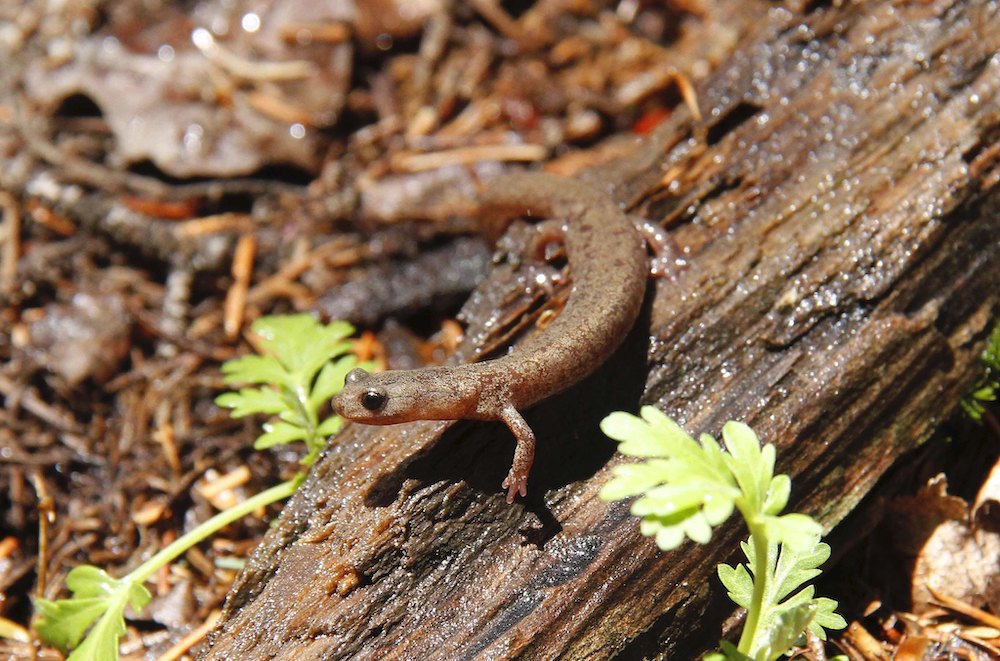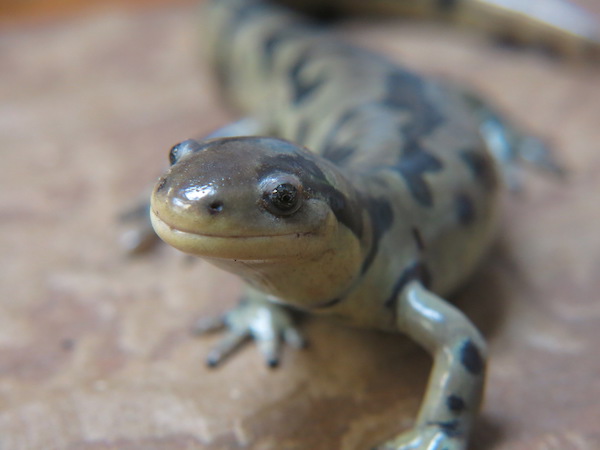
Welcome to Take It Outside! This week, we are getting to know our local reptiles and amphibians, collectively known as herptiles — or herps!
We have our very own endemic species of salamander in the Jemez Mountains: the Jemez Mountains salamander. This species is found nowhere else in the world! Learn about this elusive and endangered creature in today’s post.
Blog Post:
Los Alamos National Laboratory wildlife biologist Chuck Hathcock gives us a look into the life of the Jemez Mountains salamander, and discusses some of the threats facing this small amphibian. Read his blog post here.
Craft:
The Jemez Mountains salamander is a lungless salamander that breathes through its very thin, permeable skin. It’s crucial for this salamander to maintain moist skin, clear of chemicals and pollutants. Try this experiment demonstrating how pollutants can enter the skin of an amphibian. It uses hard-boiled eggs to model amphibians’ permeable skin.
Think about how environmental conditions can impact the survival of this endangered species.
Outdoor Challenge (Beginner):
Terrestrial amphibians like the Jemez Mountains salamander require moist soil to survive. Moist soil isn’t easy to come by here on the Pajarito Plateau! Go outside and see if you can find moist soil. Is it easier to find at the tops of hills or mesas, or at the bottoms of canyons and dips? Do you have to dig? How far down can you find moisture? Can you find it at all?
Outdoor Challenge (Advanced):

The Jemez Mountains Salamander is very rare and endangered, but there is another native salamander that is quite common in our area: the tiger salamander. Tiger salamanders have both aquatic and terrestrial life stages, and can be found in and around wetlands and small ponds throughout Northern New Mexico. The Los Alamos Reservoir is an example of a place where you can reliably see tiger salamanders during the aquatic part of their life cycle.
See if you can spot a tiger salamander! Send us a picture if you find one!
Want to Learn More?
- The first edition of our weekly Critter Chronicles video series featured Tam & Titus, our resident tiger salamanders at the Los Alamos Nature Center. Learn more about these critters by watching this video on our YouTube channel, which features PEEC’s Gift Shop & Programs Coordinator Ashleigh Lusher.
- Check out this article from the New Mexico Department of Game & Fish to learn more about the Jemez Mountains salamander and the region it occupies.
- The Santa Fe New Mexican reported on the Jemez Mountains salamander being listed as federally endangered in 2013. Read this news story to learn more about this creature and some of the threats it faces.
- Learn about tiger salamanders from the University of Michigan Museum of Zoology.
- Watch this video of one of the salamanders at the New Mexico Wildlife Center having a beetle for lunch.
Share Your Experience:
Tell us what you learn about our local reptiles and amphibians this week! We’d love to see your photos, too. Please send them to takeitoutside@peecnature.org or share them on Facebook or Instagram with the hashtag #peectakeitoutside.
Tomorrow, we’ll explore some of our local lizards!
